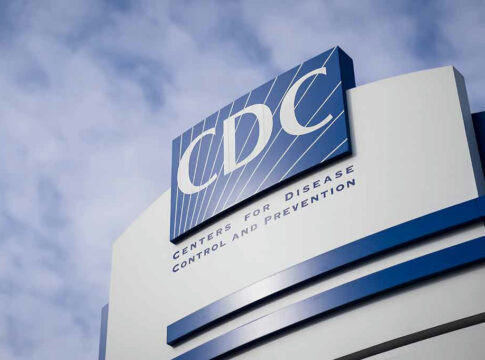One Harlem resident is dead, 22 are sick, and city officials are scrambling—yet again—to contain a deadly Legionnaires’ outbreak while frustrated New Yorkers demand answers on basic public safety and accountability.
NYC’s Legionnaires’ Outbreak: Another Deadly Crisis Hits Harlem
New Yorkers woke up to another public health fiasco this week: a deadly Legionnaires’ disease outbreak sweeping through Harlem, claiming one life and sending 22 of our neighbors to the hospital. That’s right—while city officials endlessly wrangle over woke pet projects and sanctuary city handouts, they can’t even keep the water systems safe. Residents in five Harlem zip codes—10027, 10030, 10035, 10037, and 10039—are now on high alert as the Health Department races to find the source of the outbreak. Officials have zeroed in on cooling towers, those massive rooftop systems that, if neglected, breed deadly bacteria in the summer heat. These towers have been sampled, and any that test positive for Legionella—within 24 hours—are supposed to be cleaned up, or face city orders. But ask any longtime New Yorker, and you’ll hear it loud and clear: we’ve seen this movie before, and we’re tired of the rerun.
Legionnaires’ disease outbreak in Harlem leaves at least one dead, 22 others sickened as health officials raise alarm https://t.co/i513E2PRqK pic.twitter.com/Lgpqv6opiM
— New York Post (@nypost) July 31, 2025
This isn’t the first time Legionnaires’ disease has turned up in New York. The city’s history with this illness—caused by inhaling water vapor containing Legionella bacteria—goes back decades. We all remember the Bronx outbreak in 2015 that killed 12 and sickened over 120, supposedly prompting “tougher” regulations. Yet here we are, a decade later, and the basics still aren’t covered. Most galling of all: Harlem’s densely packed neighborhoods, home to thousands of seniors and folks with health conditions, are put at risk while City Hall obsesses over anything but the essentials. Residents are told to seek medical care if they feel sick, but what about actually preventing these outbreaks from happening in the first place?
Unanswered Questions and a Pattern of Neglect
The timeline is infuriatingly familiar. On July 25, the first cases were detected, and by July 30, the city confirmed 22 illnesses and one tragic death. Health officials quickly issued public warnings and started inspecting buildings, but why does it always take a tragedy to get action? Building owners are now on notice—remediate or face consequences—but where was the oversight beforehand? The city’s own rules require regular maintenance and testing of cooling towers, yet enforcement has been spotty at best. The fact that Legionella can thrive in warm water systems is hardly news to anyone who’s paid attention to New York’s infrastructure woes. It’s a perfect storm: aging buildings, summer heat, bureaucratic lethargy, and—let’s be honest—years of city budgets wasted on everything but basic maintenance.
Health officials are quick to reassure the public that tap water is safe for drinking, bathing, and cooking. That’s the bare minimum. But everyone involved—from landlords to health authorities—should be held to a higher standard. Residents and workers deserve to know if the buildings they live and work in are up to code, and if not, who’s responsible. The city’s response now includes urgent remediation orders and ongoing environmental testing. But with each new cluster, trust erodes further, and the sense grows that the city is more reactive than proactive. If officials spent half as much time enforcing health codes as they do grandstanding about progressive politics, maybe these outbreaks would become a thing of the past.
Who’s Accountable When Public Safety Takes a Back Seat?
Legionnaires’ disease isn’t contagious, and it’s treatable if caught early—so why are we still losing lives? The answer is simple: lack of focus on fundamentals. The Health Department, led by Dr. Toni Eyssallenne, is urging anyone with flu-like symptoms to seek care. That’s good advice, but it’s cold comfort after the fact. The city’s press releases are full of assurances, but actions speak louder than words. Building owners are being forced to clean up their act—literally—but it took a fatality to trigger enforcement. Meanwhile, Harlem’s most vulnerable—seniors, smokers, people with chronic lung conditions—are left wondering if their homes and workplaces are safe. The financial fallout will be felt by property owners, healthcare providers, and taxpayers, who foot the bill for city mismanagement, time and again.
There’s a bigger lesson here: when city government gets distracted by every activist crusade and latest trend, basic public health falls by the wayside. It’s not a mystery how to prevent Legionnaires’ outbreaks—just enforce the rules, inspect the buildings, and put the community’s health first. Anything less is an insult to every New Yorker who expects safe water, safe buildings, and a city government that finally gets its priorities straight.
Sources:
NYC Health Department Press Release
CBS News: Legionnaires’ Disease Cluster in Harlem
ABC7NY: Central Harlem Legionnaires’ Cluster
ABC News: 1 Dead, 22 Sick in Harlem Legionnaires’ Outbreak

